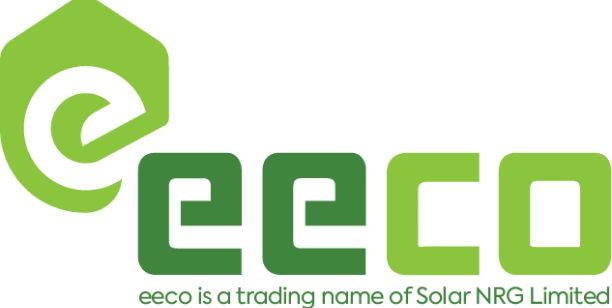Commercial solar panel installations have grown in popularity as a means for companies to lower their carbon footprints and their energy bills. However, solar panel installation can be complicated, and businesses must consider several factors before moving forward. These include calculating the return on investment (ROI), selecting the best panels for the job, complying with local regulations and permitting requirements, and working with an installer.
Evaluating the Return on Investment for Commercial Solar Panel Installations

The initial investment needed to set up solar panels on a business building is significant in determining whether the investment pays off. That incorporates the initial investment in commissions and equipment and the ongoing labor, permits, and other expenses.
But remember that solar panel installations may provide long-term savings on energy costs. In some instances, companies may return their original investment in as little as a few years, depending on variables including the size of the installation, the quantity of energy utilized, and the cost of power in the region.
Addressing the possibility of receiving tax breaks and credits is necessary. Commercial solar panel installations may be eligible for federal tax credits of up to 26% and state and municipal tax credits. Businesses need to investigate local incentives and include them in their return on investment analyses.
How to Choose Which Commercial Solar Panels Are Best for You
Many different types of solar panels exist for commercial use, giving companies plenty of options for generating solar power. Thin-film, polycrystalline, and monocrystalline are the three most frequent kinds.

Monocrystalline solar panels are unmatched in efficiency and longevity, crafted from a single silicon crystal. Yet their prohibitive cost makes them the least appealing choice.
Polycrystalline panels, made of multiple silicon crystals instead of just one, are less efficient than monocrystalline panels. But they are more affordable and have less of a financial burden.
Photovoltaic material is deposited in a skinny layer onto a substrate to make thin-film panels. They are the least efficient alternative, yet many people go with them because of their inexpensive cost, flexibility, and installation convenience.
Factors including energy needs, budget, and accessible space should guide a company’s panel installation choice.
Navigating Local Regulations and Permitting Requirements for Commercial Solar Panel Installations
Businesses installing solar panel systems for electricity generation must follow all local building rules and get all required permissions. If you don’t comply, you might be arrested, fined heavily, or even permanently banned from accessing the network. The company can make sure everything runs smoothly throughout this process.
Doing your research is the first step in learning what regulations apply to your business in a certain location. A variety of rules might fall under this category, such as those governing land use, building, and EISs. Companies should contact the city’s planning and zoning department to learn about the specific laws and regulations that apply to a proposed development.
After publicizing the regulations, businesses may verify that their implementation strategies are lawful. As part of this procedure, the requirement of providing engineered drawings, site plans, and other documentation to demonstrate the planned development’s conformity with all rules may be necessary. Certain businesses, including the building, electrical, and plumbing departments, need permission from various authorities before they can open for business.
Companies should coordinate closely with their chosen contractor to ensure a smooth solar panel installation by all local, state, and federal guidelines. Expert installers should be conversant with the necessary permits and understand any applicable regulations well. They could recommend the appropriate business licenses and even assist them in applying.
Businesses need to know that it may take weeks to get the appropriate permissions. Planning and providing enough time for the authorities to get the required approvals before commencing the installation is necessary. Providing the required documentation may reduce the possibility of problems occurring during the installation process and boost the likelihood of completing the building on time and within budget.
The environmental effects of installing solar panels are a third factor for companies to consider. Consequences for species, their habitat, and the availability of water are possible. Certain enterprises may require an Environmental Impact Assessment (EIA) or other permits from the local environmental agency. Installing it in a manner that doesn’t harm the environment may cost more time and money, but it’s worth it to have peace of mind.
Working with a Commercial Solar Panel Installer
As a commercial solar panel installer, the professional is responsible for designing, installing, and maintaining solar photovoltaic (PV) systems. The installation begins with a comprehensive assessment of the client’s energy needs and site conditions, such as available roof space, shading, and orientation.
After assessing, the installer designs a customized solar PV system that fulfills the client’s energy requirements and maximizes their return on investment. That includes selecting appropriate hardware, such as solar panels, inverters, mounting systems, and other necessary components.
The installer oversees the installation process, which involves installing the photovoltaic cells on a roof or ground, laying the electrical wiring, and connecting the system to the electrical grid while ensuring compliance with all safety regulations and building codes.
After the installation, the installer conducts thorough testing and commissioning to ensure the system functions efficiently and safely. The installer provides ongoing maintenance and monitoring services to ensure optimal performance of the solar PV system over time.
To ensure the client’s satisfaction with the outcomes, the installer maintains constant communication throughout the installation process. Staying up-to-date on advancements in solar technology and industry best practices is also crucial to provide customers with the best possible services in terms of efficacy and productivity.
Conclusion
Energy savings, fewer carbon emissions, and possible tax incentives are just a few advantages that commercial solar panel installations may provide companies. Nevertheless, negotiating with local regulators, acquiring necessary permits, selecting the optimal panel type, and calculating return on investment may be arduous.


